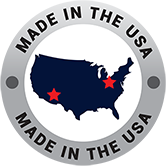Type E Thermocouple
Thermocouples function based on the Seebeck effect, a phenomenon identified by Thomas Johann Seebeck in 1821. In accordance with this principle, when two dissimilar metals are connected at two junctions and there is a temperature difference between these junctions, an electromotive force (EMF) or voltage is produced across the metal junctions.
Typically, thermocouples are composed of two distinct metal wires joined at one end to form the measurement junction, while their opposite ends are commonly connected to a measuring instrument or controller. The choice of metals depends on the desired temperature range for the thermocouple’s application. Various metal combinations result in different types of thermocouples, each showcasing unique temperature characteristics.
When the temperature at the measurement junction (hot junction) varies from that at the opposite end (cold junction or reference junction), a voltage arises across the thermocouple wires. The magnitude of the voltage is directly proportional to the temperature difference between the hot and cold junctions.
The generated voltage typically lies within the millivolt range and is subsequently measured using a voltmeter or other instrumentation capable of detecting low-level signals. To convert the voltage output into temperature, standard reference tables or mathematical equations are utilized, establishing the correlation between voltage and temperature specific to the type of thermocouple in use.
The generated voltage is typically in the millivolt range. The voltage is then measured using a voltmeter or other instrumentation capable of reading low-level signals.
A Type E thermocouple is a type of temperature sensor that belongs to the thermocouple family. Thermocouples are widely used for measuring temperature in various industrial and scientific applications.
The Type E thermocouple is specifically composed of two different metals: chromel (an alloy of nickel and chromium) and constantan (an alloy of copper and nickel). The positive leg is made of chromel, and the negative leg is made of constantan. The Type E thermocouple is known for its high accuracy, stability, and relatively high output voltage.
The temperature range for which Type E thermocouples are typically used is approximately -270°C to 1000°C (-454°F to 1832°F). They find applications in industries such as food processing, aerospace, and scientific research where precise temperature measurements are essential.
It’s important to note that when using thermocouples, accurate temperature measurements depend on proper calibration, and factors such as wire length, connections, and the specific conditions of use can influence the accuracy of the readings.
Cleveland Electric Laboratories: Type E Thermocouple
Cleveland Electric Labs (CEL) plays a crucial role across various industries, highlighting its importance in the realm of electrical engineering and technology. Recognized for its innovative contributions, CEL serves as a pivotal force in advancing diagnostics, protection, and monitoring within power systems. The company’s sophisticated products and services have been instrumental in enhancing the efficiency, reliability, and safety of electrical systems across a diverse range of applications. CEL distinguishes itself through its unwavering commitment to research and development, positioning it as an industry leader renowned for delivering high-caliber solutions tailored to the evolving needs of its clients. Beyond its technical expertise, CEL actively contributes to promoting sustainability and resilience in electrical infrastructure. With a steadfast dedication to excellence, Cleveland Electric Labs stands as an indispensable partner for organizations seeking state-of-the-art electrical solutions and technological advancements.



